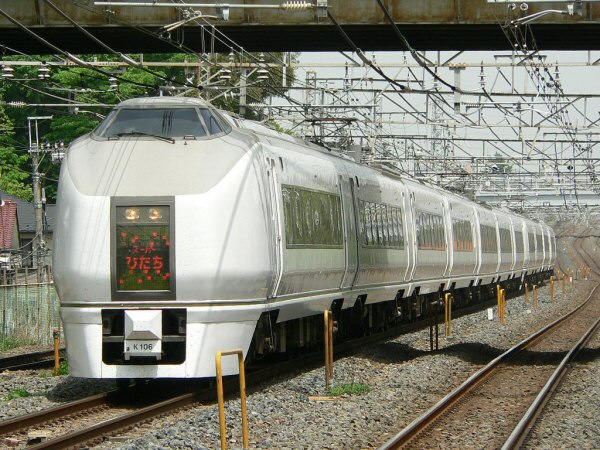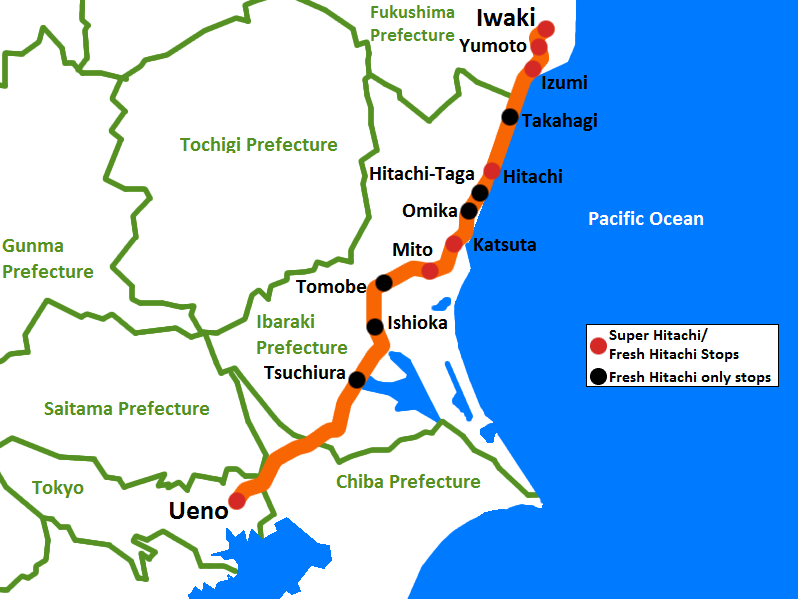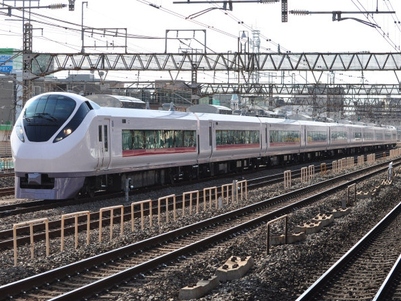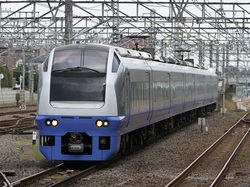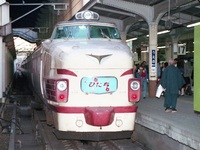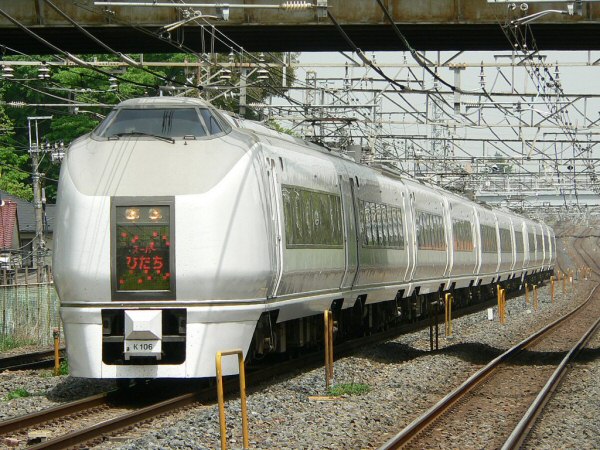Super Hitachi/Fresh Hitachi Limited Express
Trains Operated as the Super Hitachi/Fresh HitachiSeries E657 Super Hitachi/Fresh Hitachi
2012 - Present Photos courtesy of Railstation.net
|
Operated on: JR Joban Line
Operated by: JR East First run: October 1969 (Hitachi) March 1989 (Super Hitachi) October 1997 (Fresh Hitachi) Stations
Super Hitachi Ueno - Matsudo - Kashiwa - Tsuchiura - Ishioka - Tomobe - Akatsuka - Mito - Katsuta - Tokai - Omika - Hitachi Taga - Hitachi - Takahagi - Isohara - Otsuko - Nakoso - Ueda - Izumi - Yumoto - Iwaki Fresh Hitachi Ueno - Nippori - Kashiwa - Toride - Fujishiro - Sanuki - Ushiku - Hitachinoushiku - Arakawaoki - Tsuchiura - Kandatsu -Ishioka - Tomobe - Akatsuka - Mito - Katsuta - Tokai - Omika - Hitachi Taga - Hitachi - Jyuou - Takahagi - Ueda - Izumi - Yumoto - Iwaki Stations in Bold are stopped at by all trains Stations in Red are stopped at by some trains Stations in Blue are stopped at by some trains heading towards Tokyo Stations in Green are stopped at by some trains heading towards Iwaki The Super Hitachi and Fresh Hitachi are JR's main expresses that run on the Joban Line heading northward along the pacific coastline of Japan. It parallels the Tohoku Shinkansen which runs further inland.
The two terminals are Ueno Station in Tokyo and Iwaki Station in Fukushima Prefecture. In between these two stations, the Hitachis make their way through the north-western edge of Chiba up to Mito City, the capital of Ibaraki, then make their way along the pacific coast. Service from Iwaki to Sendai was provided but was stopped after the earthquake that struck Japan on March 11, 2011. There are no plans on restoring this service at the moment. The Hitachi gets its name from the Province of Hitachi, which is the pre-Meiji Restoration name of the area that is most of modern day Ibaraki Prefecture. When the Series 651 started running in 1989, JR East created the Super Hitachi which stops at fewer stops than the regular Hitachi. The name "Hitachi" on it's own disappeared as a limited express in 1998 with all variations of the name being absorbed into Fresh Hitachi or abandoned. In 2012, JR East began running its brand-new Series E657 trains as the Super Hitachi which will eventually replace the Series 651. Did you know? The Super Hitachi was the first JR Train to earn the "Super" title. |

